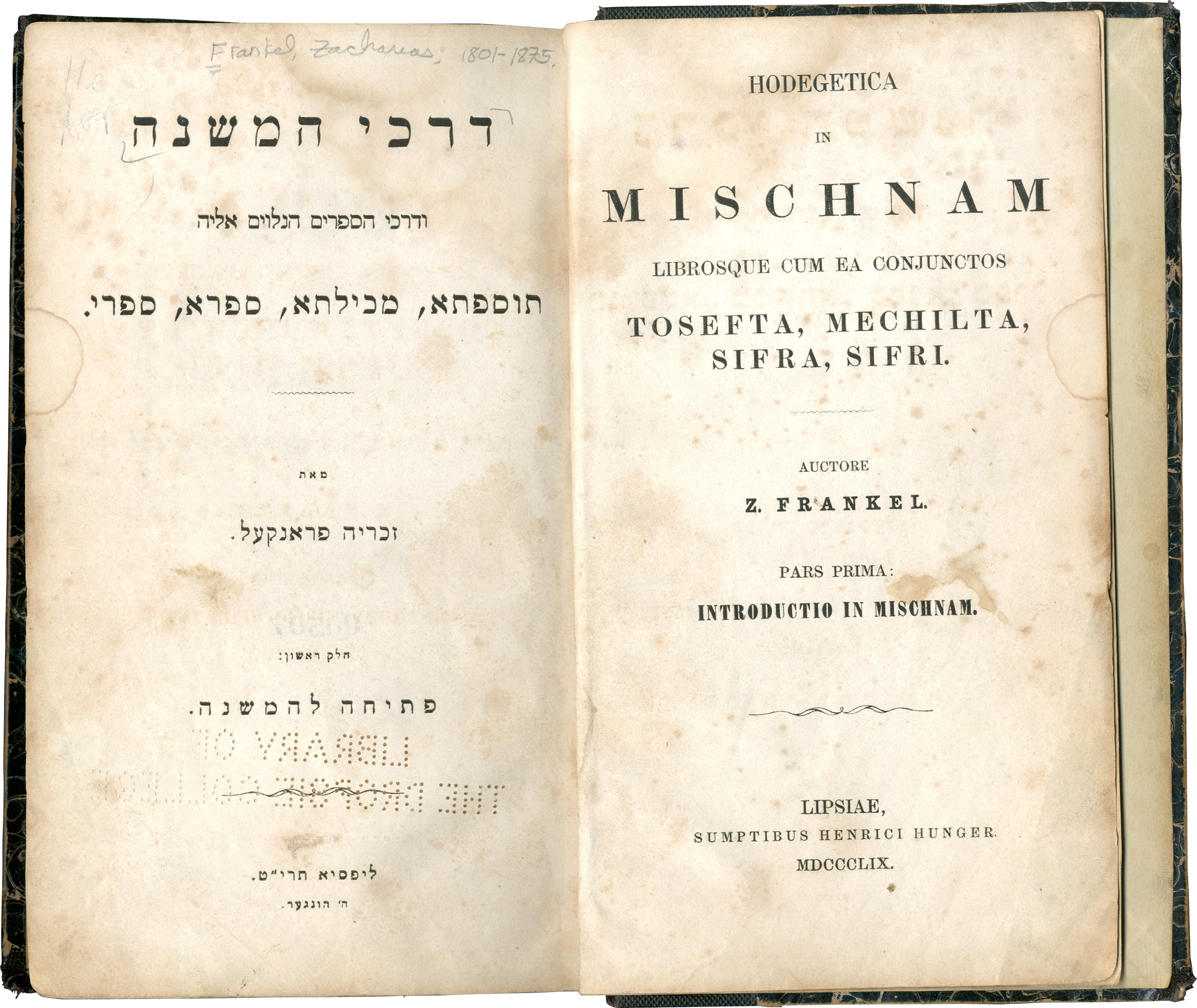During the 1850s the religious spectrum of German Jewry encompassed various Orthodox orientations, from an Old Orthodoxy hostile to emancipation and modernity, to a Neo-Orthodoxy that combined a strict Torah-true religious adherence to the Law with an affirmative attitude toward German culture and the German nation. On the other hand, there were radical and moderate versions of a Reform Judaism that looked at tradition through the prism of historical criticism, and evaluated conceptions of faith and its practice using yardsticks calibrated in terms of the cultural and social parameters of the non-Jewish environment. Between Reform Judaism and Orthodoxy, representatives of a third religious current began to distance themselves from Reform and Orthodoxy and express their views in the public arena. Prominent among them was Zacharias Frankel, born in Prague in 1801. After obtaining his doctorate in Budapest in 1830, Frankel was appointed rabbi (Kreisrabbiner) in Leitmeritz (Litoměřice) in Bohemia, before the Dresden Jewish Community elected him as chief rabbi in 1836. In Saxony he served until 1854, establishing a reputation as a "moderate reformer." He then moved to Breslau after having been appointed director of the newly founded Jewish Theological Seminary, the first modern rabbinical training institute on German soil.
As one of the pioneers of modern Wissenschaft des Judentums, Frankel gained fame mainly as a historian of Jewish religious law. In his scholarship he freely adapted concepts originally developed by Friedrich Carl von Savigny and other scholars of the German Historical School of Jurisprudence. In 1859 Heinrich Hunger, a German non Jewish publishing house, seated in Leipzig, printed Frankel’s magnus opum, a scientific introduction to the Mishna. The author initially conceptualized the book as the first part in a series of works dedicated to the history of Tannaitic halakhic literature. However, no further volumes were ever to be published.
Frankel’s book Darkhe ha-mishnah is considered a milestone in modern Jewish scholarship. There also is good reason to call the research he presented "counter-history" because Frankel used key texts of Orthodox Judaism against Orthodoxy in order to corroborate his view of a tradition that had not been revealed at Sinai but developed over the course of history and by that process had gained sacred status. Frankel was severely attacked by conservative religious circles who perceived his introduction as a threat
